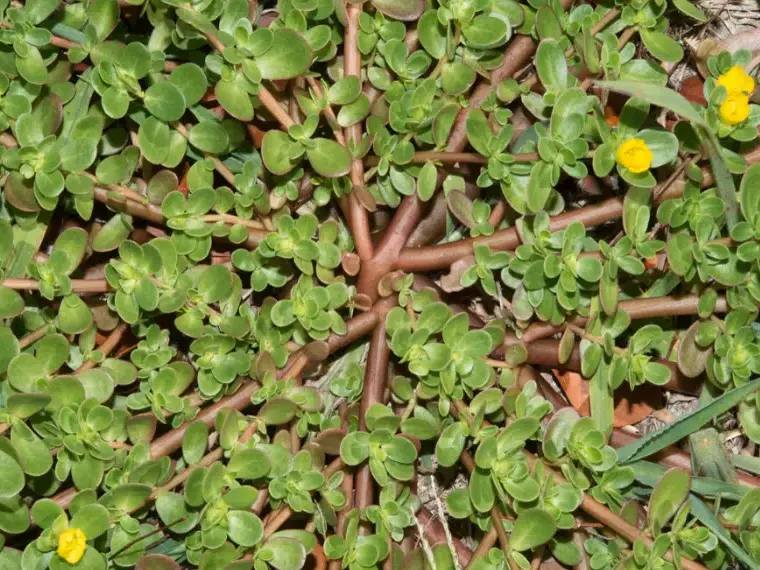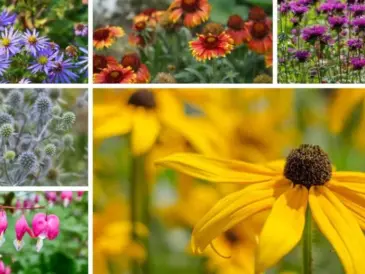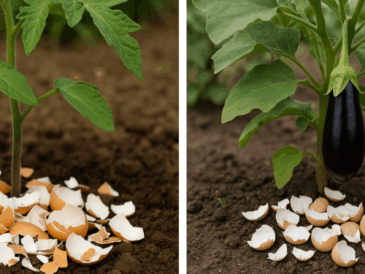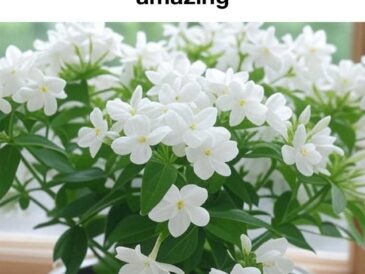To many gardeners, the sight of purslane sprawling across a flower bed or vegetable patch signals an uninvited guest.
With its succulent leaves and rapid growth, purslane (Portulaca oleracea) is often pulled out and discarded as a weed.
But here’s the truth: purslane is not only edible – it’s incredibly nutritious, beneficial for your soil, and one of the most underrated plants in the garden.
Before you yank out another cluster of this resilient green, consider this: what if you could turn a so-called weed into a superfood, a soil enhancer, a pollinator magnet, and a natural mulch – all without any planting, fertilizing, or maintenance?
In this article, we’ll reveal 7 compelling reasons why you shouldn’t kill purslane in your garden and instead embrace its powerful benefits for both health and horticulture.
What Is Purslane?
Purslane (Portulaca oleracea) is a succulent annual plant that grows close to the ground, forming thick mats with small, fleshy, oval-shaped leaves and tiny yellow flowers.
It thrives in poor soils, sunny spots, and dry conditions – often popping up uninvited in gardens, pathways, or even cracks in concrete.
Native to Persia and India, purslane has been used as both food and medicine for thousands of years. It appears in Greek, Roman, Chinese, and Middle Eastern texts as a culinary herb and traditional remedy.
Yet today, it’s often misunderstood and underappreciated in modern gardens.
1. Purslane Is a Nutritional Powerhouse
If there were a prize for the healthiest weed, purslane would win it.
According to the USDA and numerous nutrition studies, purslane is richer in certain nutrients than most cultivated vegetables. It’s especially prized for its omega-3 fatty acid content – rare for a land plant.
Key Nutritional Highlights:
| Nutrient | Amount (per 100g raw) |
|---|---|
| Omega-3 ALA | 350–400 mg |
| Vitamin A | 1320 IU (more than spinach) |
| Vitamin C | 21 mg |
| Magnesium | 68 mg |
| Potassium | 494 mg |
| Iron | 1.99 mg |
| Calcium | 65 mg |
It’s also high in:
- Glutathione and Melatonin (powerful antioxidants)
- Beta-carotene
- Flavonoids and polyphenols
Purslane contains up to 7x more alpha-linolenic acid (ALA) than spinach, making it one of the best plant-based sources of omega-3s.
2. It’s 100% Edible – and Delicious
Purslane isn’t just edible – it’s delicious and versatile in the kitchen. Its mildly tangy, lemony flavor and crisp, juicy texture make it a favorite in traditional dishes around the world.
Culinary Uses:
- Salads: Use fresh leaves and stems raw in salads.
- Stir-fries: Add at the end of cooking for crunch.
- Soups and stews: Common in Middle Eastern and Mexican cuisine.
- Smoothies: Blend with fruits and greens.
- Pickled: Its tangy flavor pairs well with vinegar-based pickles.
- Egg dishes: Toss into omelets or frittatas.
The mucilaginous (slightly slimy) texture, similar to okra, makes it great for thickening soups and adding moisture to dishes.
Tip: Harvest young, tender stems and leaves in the morning for the best flavor and texture.
3. Purslane Improves Soil Health
Not only is purslane good for your body – it’s great for your soil.
This low-growing plant acts as a natural ground cover, preventing erosion, retaining moisture, and protecting the topsoil from drying out or washing away during heavy rain.
Soil Benefits:
- Reduces evaporation by shading bare soil
- Breaks up compacted earth with its shallow roots
- Brings up nutrients from deep soil layers to the surface
- Adds organic matter when chopped and dropped as green mulch
Its presence is a living indicator of fertile, well-drained soil – so if it’s thriving in your garden, your soil is probably healthier than you thought.
4. It Attracts Pollinators and Beneficial Insects
Those tiny yellow blooms on your purslane patch aren’t just cute – they’re powerful magnets for pollinators.
Though small, purslane flowers are open and accessible to: Bees, Hoverflies, Butterflies, Other beneficial insects.
In a time when pollinator populations are declining, offering even small food sources can make a difference.
Letting purslane grow in borders, under taller crops, or in unused corners of the garden helps support biodiversity and boosts pollination of nearby crops like tomatoes, cucumbers, and squash.
5. It’s a Drought-Resistant Superplant
Purslane is a CAM plant – it performs Crassulacean Acid Metabolism, a photosynthetic process that conserves water by opening its stomata at night. This makes it exceptionally drought-tolerant.
In dry regions or during water restrictions:
- Purslane continues to thrive
- Requires little to no irrigation
- Protects surrounding plants from excessive heat by shading the soil
This makes it a great companion plant or living mulch in drought-prone or arid climates.
In times of water scarcity, purslane can provide reliable green nutrition—even when your other greens wither.
6. It’s an All-Natural Living Mulch
Forget store-bought mulch – purslane is nature’s free ground cover.
As it grows, it forms a dense mat that:
- Suppresses weeds naturally
- Shades the soil
- Maintains moisture levels
- Regulates temperature
Even better, when purslane dies back or is trimmed, it decomposes quickly, feeding the soil with organic matter. This cycle improves your garden’s fertility and moisture-holding capacity over time.
Some gardeners even use purslane as a “green manure,” chopping it and turning it into the soil before planting new crops.
7. Purslane Is a Sustainable Survival Food
Purslane is more than just an occasional edible – it’s a climate-resilient, nutrient-dense survival food that can grow in tough conditions.
In permaculture, food security, and survival gardening circles, purslane is recognized as:
- A fast-growing wild vegetable
- Able to regrow rapidly after cutting
- Seed-dense and self-replicating
- Grown with no fertilizer, water, or human intervention
Its seeds can remain viable in the soil for decades, germinating when conditions are right. This makes it a reliable food source in emergencies, natural disasters, or times of supply chain disruption.
While others rely on delicate supermarket greens, you’ll have a nutritious backup growing in your yard – no planting required.
What About Concerns Over Oxalates?
Like spinach and beet greens, purslane contains oxalates – compounds that can bind with calcium and contribute to kidney stone formation in sensitive individuals.
However, the oxalate levels in purslane are not dangerous when:
- Consumed in moderation
- Combined with calcium-rich foods (cheese, yogurt, tahini)
- Cooked or blanched, which reduces oxalate content
For most people, especially those with a varied diet and no history of kidney stones, purslane is safe and beneficial to eat.
How to Harvest Purslane Safely
Purslane often grows in neglected spaces – so before eating, make sure it’s safe.
Foraging and Harvesting Tips:
- Avoid areas near roadsides or treated with herbicides.
- Look for plump, reddish stems and smooth, paddle-shaped leaves.
- Harvest early in the day for best flavor.
- Rinse thoroughly to remove soil and insects.
Purslane has many lookalikes – do not confuse it with spurge, which is toxic. Spurge has milky sap and grows flatter to the ground with thinner leaves.
How to Grow Your Own Purslane
If you’d rather not forage, you can intentionally grow purslane in containers, beds, or hanging baskets.
Growing Tips:
- Sow seeds in full sun after the last frost.
- Requires minimal watering.
- Grows well in poor, sandy, or gravelly soil.
- Harvest leaves continuously for months.
Purslane can be grown as a microgreen, too – ready to harvest in as little as 10 days.
Bonus: Easy Purslane Recipes
1. Purslane Pesto
Blend purslane leaves with garlic, lemon juice, olive oil, and walnuts for a lemony twist on pesto.
2. Purslane Cucumber Salad
Toss fresh purslane with cucumbers, cherry tomatoes, lemon juice, and feta.
3. Purslane Omelet
Sauté chopped purslane in butter, then pour eggs over and cook until fluffy.
4. Pickled Purslane
Pack cleaned stems in vinegar, garlic, salt, and spices for a tangy probiotic-rich snack.
Purslane may have invaded your garden beds uninvited, but it brings more than enough value to earn a permanent place.
This resilient, nutritious, pollinator-friendly plant thrives where others struggle, offers health benefits few vegetables can match, and asks for nothing in return.
Before you declare war on this humble herb, consider its nutritional, ecological, and sustainable benefits. With a little knowledge and perspective, you may find that purslane is not a weed – but a gift from nature hidden in plain sight.




